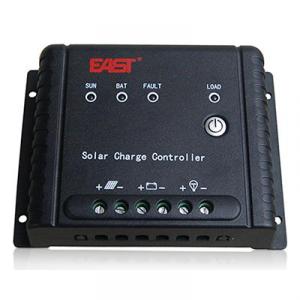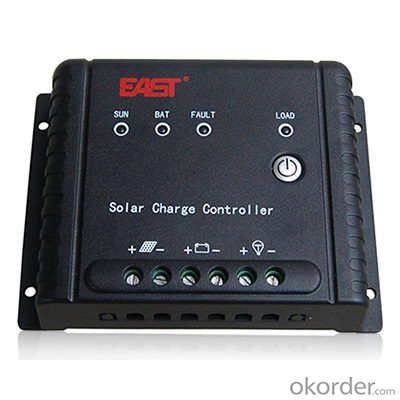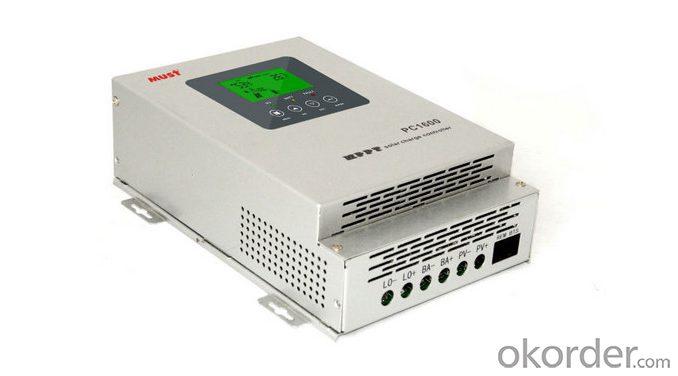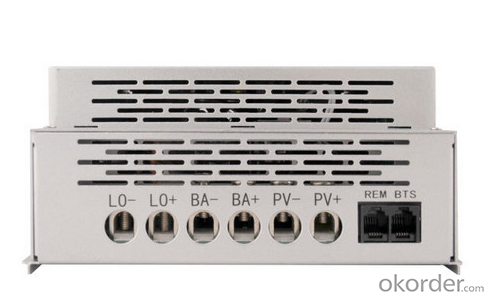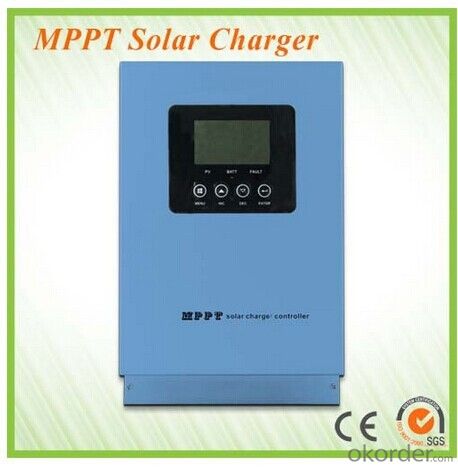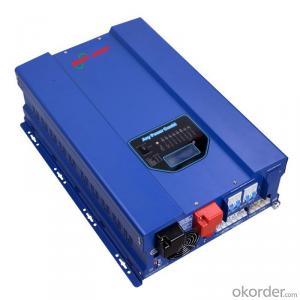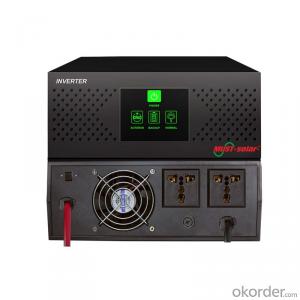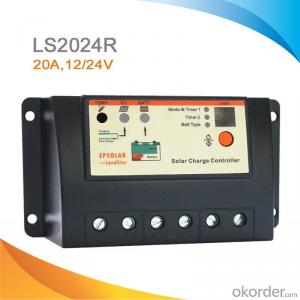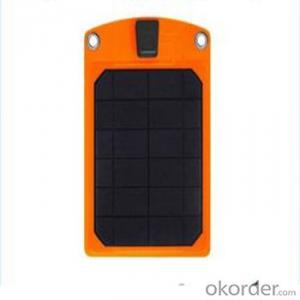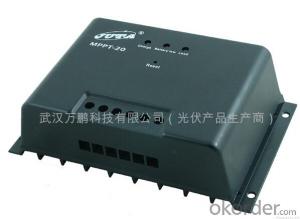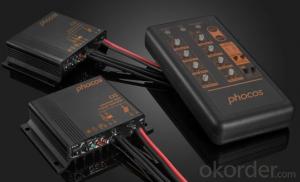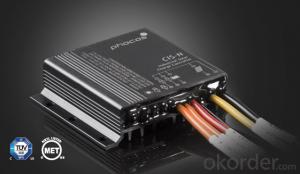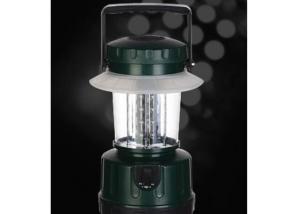Camping Solar Inverter with Solar Charge Controller LED 5A-20A Maximum Power Point Tracking
- Loading Port:
- China main port
- Payment Terms:
- TT or LC
- Min Order Qty:
- 1 pc
- Supply Capability:
- 1000 pc/month
OKorder Service Pledge
OKorder Financial Service
You Might Also Like
Solar Charge Controller LED 5A-20A
This is a highly intelligent charge controller with Maximum Power Point Tracking (MPPT). The optimal and intelligent “MPPT + SOC” charge control is implemented. The power switching components consist of low-loss MOSFET type transistors that have a long operating life and guarantee high performance. The extremely low own consumption makes it especially suitable for solar home systems, solar street lamp system, advertising lighting, traffic management system, and other professional applications etc. With the reverse polarity protection, lightning protection, electronic fuse and automatic detection of faulty battery, the controller is robust, maintenance-free and user-friendly.
● Solar home system
● Public security monitoring system
● Solar street lamp system
● DC signal light power supply system
● Small and medium size telecommunication station power supply system
● Small size solar power station system and solar DC power supply system
Model | F12-05 F12-05M | F12-10 F12-10M | F12-20 | F24-05 F24-05M | F24-10 F24-10M | F24-20 |
System Voltage | 12V | 24V | ||||
Rated Charging Current | 5A | 10A | 20A | 5A | 10A | 20A |
Rated Load Current | 5A | 10A | 20A | 5A | 10A | 20A |
PV Panels Configuration(Suggestion)(Imp≤Rated Current) | ≤5A | ≤10A | ≤20A | ≤5A | ≤10A | ≤20A |
Battery Capacity | 17Ah~400Ah | |||||
Max. Efficiency | > 98% | |||||
Static Dissipation | < 0.5%(system rated current) | |||||
Solar Battery Port Input Voltage Range | 0 - 25V | 0 - 50V | ||||
Rated Battery Voltage | 12V | 24V | ||||
Buck Charge Voltage | 14.6V±0.2V | 29.2V ±0.3V | ||||
Float Charge Voltage | 14.4V±0.2V | 28.8V±0.3V | ||||
Overcharge Protection | 14.7V±0.2V | 29.4V±0.3V | ||||
Charging Resume Voltage | 13.2V ±0.2V | 26.4V ±0.3V | ||||
Undervoltage Alarm | 11.2V±0.2V | 22.4V±0.3V | ||||
Over Discharge Protection | 10.8 V±0.3V | 21.6V±0.4V 3.2V ±0.3V | ||||
Over Discharge Resume Start Voltage | 13.2V ±0.3V | 26.4V±0.3% | ||||
Discharge Circuit Voltage Drop | < 4 % (system rated voltage) | |||||
Overload, Short-Circuit Protection | 125%(60s)/ 150%(10s) / short-circuit auto shut down; | |||||
Input Overvoltage Protection | 200%(rated voltage) | |||||
PV Reverse Polarity Connection Protection | YES | |||||
Control Mode | Switch control / PWM | |||||
Display | LED | |||||
Alarm Mode | sound(optional)、light alarm | |||||
Working Temperature | -20℃ ~ +45℃ | |||||
Relative Humidity | 0-95%(noncondensing) | |||||
Altitude | 1000m with rated power (increase 100m, reduce power 1%) Max.4000m | |||||
Storage Temperature | -25℃ ~ +85℃ | |||||
Storage Humidity | ≤85% | |||||
Installation Method | hanging vertical installation | |||||
Packing Dimension WxDxH(mm) | 136× 100× 35 | |||||
Packing Weight(kg) | 0.23 | |||||
Weight(kg) | 0.28 | |||||
Package | 40pcs/carton | |||||
· Q. What is an UPS and What it is for ?
An uninterruptible power supply (UPS) is a device that allows your computer or telephone switch or critical equipement to keep running for at least a short time or longer time when the primary power source is lost. It also provides protection from power surges, spikes, brownouts, interference and other unwanted problems on the supported equipment.
· Q. How long the UPS to run when power goes?
This can take 3 paths.
1.You can pick a UPS that is rated for pretty much the full VA you need so it will be running at 100% of capability and will thus last 'n' minutes.
2.You can pick a UPS that is rated at a much higher VA value than you really need so, for example, is running at 50% of capability and will thus last for longer than the UPS from option 1.
3.You can use extra external battery packs to run for longer. If charging capability allows, the more and the bigger batteries you take with, the longer time UPS runs.
or using a generator after about 6 hours, it will be more cost-effective, with a short runtime UPS to bridge the generator start-up gap.
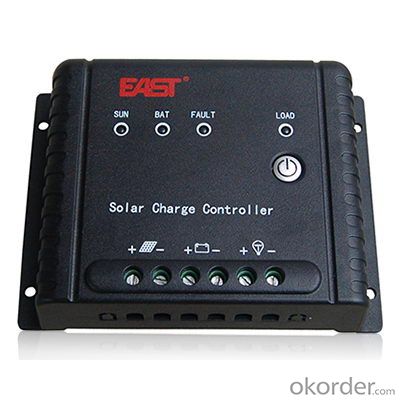

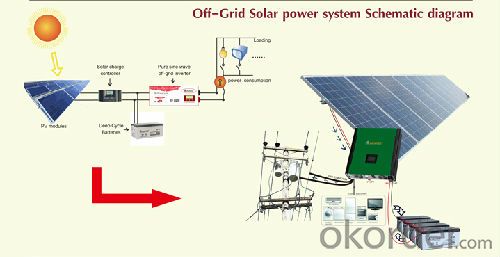
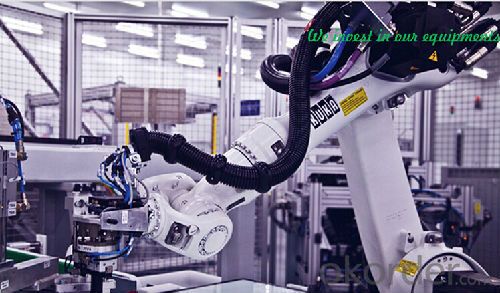
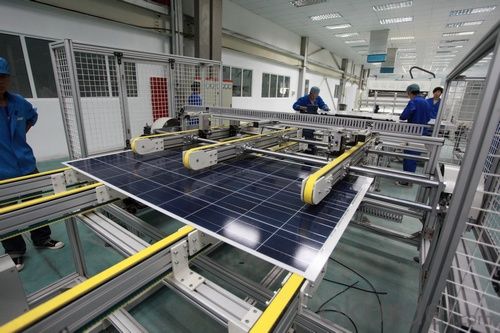
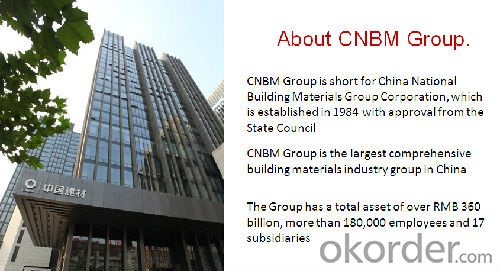
- Q: Can a solar inverter be used with a solar-powered agriculture system?
- Yes, a solar inverter can be used with a solar-powered agriculture system. A solar inverter is an essential component that converts the direct current (DC) electricity generated by solar panels into alternating current (AC) electricity, which is compatible with most electrical appliances and equipment. In the context of a solar-powered agriculture system, a solar inverter would be necessary to convert the electricity produced by the solar panels into the appropriate form for powering agricultural machinery, irrigation systems, or any other electrical needs on the farm.
- Q: How does a solar inverter handle voltage regulation during load changes?
- A solar inverter handles voltage regulation during load changes by continuously monitoring the output voltage and adjusting its operation accordingly. When there is a sudden increase or decrease in load, the inverter's control system quickly responds by either increasing or decreasing the amount of power it draws from the solar panels. This ensures that the voltage remains stable and within the desired range, minimizing the impact of load changes on the system.
- Q: How does a solar inverter synchronize with the grid frequency?
- A solar inverter synchronizes with the grid frequency by continuously monitoring the frequency of the electrical power supplied by the grid. It adjusts its own output frequency to match the grid frequency using a built-in control mechanism. This synchronization ensures that the solar inverter's power is in phase with the grid power, allowing it to smoothly inject electricity into the grid without causing disruptions or power quality issues.
- Q: How does a solar inverter handle shading on the solar panels?
- A solar inverter handles shading on the solar panels by utilizing maximum power point tracking (MPPT) technology. This technology enables the inverter to constantly monitor the output of each individual solar panel and adjust the voltage and current to ensure maximum power generation. When shading occurs on a panel, the inverter adjusts the voltage and current to bypass the shaded area and optimize the output from the unshaded areas. This allows the system to still generate as much power as possible, despite the shading.
- Q: How does a solar inverter handle reverse power flow?
- A solar inverter handles reverse power flow by automatically adjusting its operation to convert and redirect excess electricity produced by the solar panels back into the grid. This process ensures efficient utilization of electricity and prevents any potential damage or overload to the solar system.
- Q: How does a solar inverter handle power quality issues in the grid?
- A solar inverter helps to handle power quality issues in the grid by continuously monitoring the voltage and frequency of the grid. If it detects any variations or deviations from the standard levels, it adjusts its own output accordingly to maintain a stable and reliable power supply. Additionally, some advanced solar inverters also incorporate features like power factor correction and voltage regulation to further enhance power quality and ensure efficient utilization of the solar energy generated.
- Q: How does a solar inverter affect the overall efficiency of a solar system?
- A solar inverter plays a crucial role in converting the direct current (DC) produced by solar panels into alternating current (AC) that can be used to power household appliances and feed into the electrical grid. It directly affects the overall efficiency of a solar system by maximizing the power output, reducing energy losses during conversion, and ensuring optimal functioning of the system. A high-quality solar inverter can significantly improve the efficiency of a solar system, resulting in increased energy generation and cost savings.
- Q: What is the role of galvanic isolation in a solar inverter?
- The role of galvanic isolation in a solar inverter is to provide electrical safety and prevent potential hazards. It separates the input and output circuits electrically, using transformers or optocouplers, to eliminate any potential voltage differences, ground loops, or electrical noise that could cause damage to the inverter or connected devices. Additionally, galvanic isolation helps to protect against electric shocks and ensures the safety of both the system and individuals working with or around the solar inverter.
- Q: How does a three-phase solar inverter differ from a single-phase inverter?
- A three-phase solar inverter differs from a single-phase inverter in terms of the number of phases they support. While a single-phase inverter is designed to work with a single-phase electrical system, a three-phase solar inverter is specifically designed to handle three-phase electrical systems. This means that a three-phase inverter can handle higher power loads and is more efficient in distributing power across the three phases, resulting in better overall performance and stability for three-phase electrical systems.
- Q: Can a solar inverter be used for both grid-tied and off-grid systems?
- Yes, a solar inverter can be used for both grid-tied and off-grid systems. However, it is important to note that there are different types of solar inverters designed specifically for each system. Grid-tied inverters are designed to convert DC power generated by solar panels into AC power and feed it into the grid, while off-grid inverters are designed to convert DC power into AC power for use in standalone systems not connected to the grid.
Send your message to us
Camping Solar Inverter with Solar Charge Controller LED 5A-20A Maximum Power Point Tracking
- Loading Port:
- China main port
- Payment Terms:
- TT or LC
- Min Order Qty:
- 1 pc
- Supply Capability:
- 1000 pc/month
OKorder Service Pledge
OKorder Financial Service
Similar products
Hot products
Hot Searches
Related keywords
